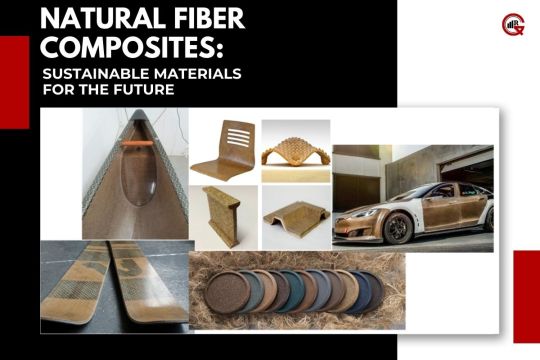#GreenEngineering
Explore tagged Tumblr posts
Text
How the Alfa Laval Gasketed Plate Heat Exchanger is Quietly Powering the World’s Smartest Industries

In a world driven by energy, precision, and speed, some of the most powerful technologies work silently behind the scenes—doing the heavy lifting without fanfare. One of those unsung heroes is the Alfa Laval gasketed plate heat exchanger, a piece of equipment that’s quietly transforming energy efficiency and industrial performance across the globe.
From chemical plants in Dubai to district cooling systems in Abu Dhabi, the Alfa Laval gasketed plate heat exchanger is a vital player in the UAE’s modern infrastructure. So, what makes it so indispensable? Let’s pull back the curtain and take a closer look.
🔍 The Innovation Behind the Plate
At first glance, a gasketed plate heat exchanger may look like a stack of metal sheets. But with Alfa Laval engineering, each plate is a precision tool—specially designed with unique corrugation patterns to maximize heat transfer while minimizing pressure drop.
The Alfa Laval gasketed plate heat exchanger uses strategically placed gaskets to direct fluids through alternating channels, ensuring optimal thermal contact. This translates to faster heat exchange, reduced energy usage, and a significant boost in operational efficiency.

⚙️ Why the Smartest Engineers Choose Alfa Laval
Scalability: Whether you’re running a food processing plant or a petrochemical facility, the Alfa Laval gasketed plate heat exchanger can be scaled to meet your needs.
Maintenance Made Easy: No need to shut down your entire system for maintenance. Plates can be easily removed, inspected, and cleaned—keeping downtime to a minimum.
Saves Space, Saves Energy: The compact design of an Alfa Laval gasketed plate heat exchanger makes it perfect for installations where space and energy are both premium commodities.
Proven Performance in Harsh Environments: Especially in the Middle East, where high temperatures and demanding workloads are the norm, Alfa Laval continues to outperform competitors.
🌍 Real-World Impact
Consider a large beverage factory in Sharjah that replaced its old shell-and-tube units with Alfa Laval gasketed plate heat exchangers. Not only did they cut their energy costs by 18%, but the improved heat recovery process also sped up production. That’s the Alfa Laval difference—performance that pays off from day one.
🚀 The Future of Cooling is Already Here
As the world shifts toward greener, more sustainable energy use, the Alfa Laval gasketed plate heat exchanger plays a critical role in making industrial processes more eco-friendly. Its efficient thermal design reduces waste heat, optimizes cooling systems, and minimizes carbon footprints.
#AlfaLavalGasketedPlateHeatExchanger#IndustrialEfficiency#SmartCoolingSystems#HeatTransferTechnology#EnergySavingSolutions#HVACUAE#GreenEngineering
1 note
·
View note
Text
🧬 What is biological engineering? Dive into the discipline that merges biology with engineering to solve real-world problems in healthcare, agriculture, and the environment.
#BiologicalEngineering#BioTech#EngineeringBiology#LifeScienceEngineering#Biomedicine#Agritech#SyntheticBiology#EngineersHeaven#GreenEngineering#FutureOfBiotech
1 note
·
View note
Text
🌿 Biopolymers and Beyond: Sustainable Materials Redefining Industrial Innovation
By Hafiz Muhammad Husnain Azam Researcher, Brandenburg University of Technology Cottbus-Senftenberg 📘 Published 🔗 Read Full Chapter on Wiley
The Material Revolution Starts with Nature
In an era driven by the urgent need for environmental responsibility, industries across the globe are turning to biopolymers—natural, biodegradable materials derived from plants and microorganisms—as sustainable alternatives to petroleum-based plastics. But biopolymers are no longer limited to raw forms.
In this chapter, we explore the next generation of biopolymer engineering, including:
Blends
Interpenetrating Polymer Networks (IPNs)
Gels
Composites
Nanocomposites
Each form unlocks new levels of functionality, durability, and industrial relevance—setting a new benchmark for sustainable material science.
🔍 What’s Inside the Chapter?
✅ Biopolymer Fundamentals
Derived from natural sources like chitin, starch, and bacterial fermentation, biopolymers offer biodegradability, renewability, and low toxicity—key drivers for their rise in packaging, agriculture, and medical sectors.
✅ Blends & Composites
Blending different biopolymers (e.g., PLA + PBAT) or reinforcing them with natural fibers like hemp and flax creates materials with superior mechanical and thermal properties—ideal for packaging, automotive parts, and construction components.
✅ IPNs (Interpenetrating Polymer Networks)
These materials interlace multiple polymer networks at the molecular level, providing enhanced strength, elasticity, and chemical resistance. Their applications span tissue engineering, drug delivery, and industrial coatings.
✅ Gels & Hydrogels
Engineered for biomedical and pharmaceutical applications, these viscoelastic materials mimic tissue behavior and offer excellent moisture retention, making them useful in wound healing and drug delivery.
✅ Biopolymer-Based Nanocomposites
Infused with graphene oxide, CNTs, and metal nanoparticles, these advanced materials deliver exceptional barrier properties, conductivity, and antimicrobial activity—revolutionizing electronics, sensors, and environmental cleanup systems.
🌍 Applications Across Industries
Sustainable Packaging: Compostable materials replacing traditional plastics
Biomedical Engineering: Smart gels and scaffolds for regenerative medicine
Environmental Remediation: Nanocomposites that adsorb heavy metals and organic toxins
Smart Materials: Biopolymer-based systems with stimuli-responsive behavior
⚠️ Challenges and the Path Forward
Despite immense potential, the commercialization of biopolymer systems is constrained by:
Mechanical performance gaps
Higher production costs
Scalability concerns
Ongoing research focuses on nanofiller optimization, hybrid design, and cost-effective green synthesis to overcome these hurdles. The goal: making sustainable materials mainstream, not niche.
Let’s Redefine the Future of Materials
This chapter is a comprehensive entry point into the world of sustainable, high-performance materials. If you're involved in materials science, product development, environmental policy, or green manufacturing, this research offers actionable insights to guide your innovation pipeline.
📖 Read the full study: Wiley – Biopolymer Blends, IPNs, and Nanocomposites
https://doi.org/10.1002/9781119783473.ch1
https://go.nature.com/4j29x66

#Biopolymers#GreenMaterials#SustainablePackaging#BioComposites#EcoInnovation#Nanocomposites#SmartMaterials#MaterialsScience#CircularEconomy#RenewableResources#GreenEngineering#BiodegradableMaterials#AdvancedPolymers#IPNs#Hydrogels#EcoFriendlyPlastics#SmartPackaging#FutureOfMaterials#EnvironmentalRemediation#TissueEngineering#NaturalPolymers#SustainableDesign#Bioengineering#WasteToWealth#GreenManufacturing#UNSDG12#CleanTechnology#MaterialsInnovation#NatureBasedSolutions#books
1 note
·
View note
Video
youtube
Unlocking Geothermal Secrets: Low-Grade Heat Power! #sciencefather #geothermalenergy #scientist
Utilizing low-grade heat from geothermal micro-seepages 🌋 for thermoelectric systems offers a sustainable and feasible approach to clean energy production ⚡. These naturally occurring low-temperature sources, often overlooked due to their modest thermal output 🌡️, can be effectively harnessed using thermoelectric generators (TEGs), which convert heat directly into electricity without moving parts 🔌. This method promotes environmental sustainability by reducing greenhouse gas emissions 🌱 and reliance on fossil fuels ⛽. Moreover, the feasibility of such systems is enhanced by their scalability, low maintenance, and potential for off-grid applications 🏕️. By tapping into these dispersed and abundant energy sources, we can empower rural and remote communities while supporting a transition to greener energy solutions 🌍✨.
Natural Scientist Awards
Nomination Link: https://naturalscientist.org/award-nomination/?ecategory=Awards&rcategory=Awardee
Visit Our Website 🌐naturalscientist.org
Contact us [email protected]
Get Connected Here:
LinkedIn: https://www.linkedin.com/in/natural-scientist-466a56357/
Blogger: https://naturalaward.blogspot.com/
Instagram: https://www.instagram.com/natural_scientist/
Pinterest: https://in.pinterest.com/research2805/_profile/
Youtube: https://www.youtube.com/@NaturalScientistAwards
Facebook: https://www.facebook.com/profile.php?id=61574191899176
#youtube#sciencefather#naturalscientistawards#researchawards#lowheat#geothermalenergy#thermoelectric#sustainableenergy#greenenergy#renewableenergy#cleanenergy#energyefficiency#micro#offgridpower#ecoenergy#heat#climateaction#energyinnovation#energysystem#geothermal#sustainabletechnology#renewable#cleantech#lowgrade#greenengineering#environmentalresearch#energy#utilization#climate#sustainabledevelopment
0 notes
Text
Explore innovative thermal evaporation systems for reject concentration with Green Method Engineering. Achieve efficient wastewater management and sustainable solutions in Kerala.
#ThermalEvaporation#RejectConcentration#WastewaterManagement#SustainableSolutions#GreenEngineering#WaterTreatment#Kerala
0 notes
Text
Trends Shaping the Future of Product Engineering: What to Expect by 2030

Advanced technologies are changing the way the designing, developing and delivering products evolve as product engineering is going through a monumental transition. The understanding of these trends is non-negotiable for businesses to stay ahead in a competitive market. Product engineering services companies in the USA are at an exciting stage of advancement, customer-centric design, and scalability. These transitions have the potential to revolutionize industries and create opportunities for growth.
1. The Rise of Artificial Intelligence and Machine Learning
In product engineering, Artificial Intelligence (AI) and Machine Learning (ML) play a very important role. For various organising processes of product lifecycles like the automation of complex processes, analysis of vast data sets, and allowance of predictive maintenance, AI and ML can be helpful.
2. Sustainability and Green Engineering
Sustainability is not avoidable anymore. Through the processes like renewing of materials and optimizing energy efficiency, green practices will be relevant in the engineering sector. It’s a must for all the product engineering services companies in the USA to invest in environmentally friendly practices.
3. Nanotechnology
Many stronger, lighter, and versatile products are created due to the development of advanced materials and nanotechnology, which helps increase durability and performance along with reducing costs. Product engineering services companies in the USA are already looking into fields like healthcare, electronics, and energy for incorporating nanotechnology to create many new products by 2030.
4. 5G and Edge Computing
Once 5G networks and edge computing come into play, the world of connectivity and data processing will experience a big transition. Smarter products and smooth IoT integrations are possible with faster internet speeds and real-time analytics. These new advancements provide opportunities for product engineering services companies in the USA that are supportive of connected ecosystems.
Product engineering services companies in the USA is going great heights with these technological innovations and it’s important for businesses to welcome those with open hands to stay relevant in the market. Engineering sector is indeed going to blow up in the coming years.
Discover More: https://www.veetechnologies.com/industries/engineering-services-and-solutions/product-engineering-manufacturing.htm
#ProductEngineering#Innovation#AI#MachineLearning#Sustainability#GreenEngineering#Nanotechnology#5G#EdgeComputing#TechTrends#SmartProducts#IoT#FutureOfEngineering#EngineeringServices#ProductDevelopment#AdvancedTechnology#BusinessGrowth#ManufacturingSolutions#VeeTechnologies#EngineeringInnovation
0 notes
Text
#top college of technology in trichy#krct the top college of technology in trichy#best college of technology in trichy#ClimateResilience#SustainableInfrastructure#GreenEngineering#CivilEngineering#DisasterResilience#FutureCities#GeotechnicalEngineering#ClimateChangeMitigation#InfrastructureInnovation
0 notes
Text

Sustainable Chemistry Practices for Green Engineering Sustainable Chemistry Practices play a crucial role in advancing green engineering solutions by enabling environmentally friendly technologies and processes.
#best college of engineering in trichy#best autonomous college of engineering in trichy#krce the top engineering college in trichy#top college of engineering in trichy#krce the best college of engineering in trichy#college life stories#engineering faculty#SustainableChemistryPractices#GreenEngineering#EnvironmentalSolutions#EcoFriendly#Sustainability#CleanTechnology#RenewableResources#CircularEconomy
0 notes
Text
LEW Services by Res Engineering: Innovative Low-Emission Water Solutions
Explore LEW Services by Res Engineering for cutting-edge low-emission water solutions. Our services optimize efficiency and sustainability, providing custom solutions and expert support to meet your project's needs. Discover how we enhance performance while minimizing environmental impact. Partner with us for eco-friendly engineering solutions that drive success.
Call us at: +65 6909 3132

#LEWServices#LowEmissionWater#SustainableSolutions#EngineeringExcellence#ResEngineering#EcoFriendlyTech#WaterManagement#GreenEngineering#InnovativeSolutions#EnvironmentalImpact
0 notes
Text
Natural Fiber Composites: Sustainable Materials For The Future

(Source – LinkedIn)
Natural fiber composites (NFCs) are emerging as a sustainable alternative to traditional composite materials. By combining natural fibers with a polymer matrix, NFCs offer a range of benefits including environmental friendliness, cost-effectiveness, and impressive mechanical properties. This article explores the various aspects of natural fiber composites, including their types, benefits, applications, challenges, and future trends.
Types of Natural Fibers Used in Composites
Natural fibers used in composites are derived from various sources, including plants, animals, and minerals. Each type of fiber brings unique properties to the composite material.
Plant Fibers: These are the most commonly used natural fibers in composites and include flax, jute, hemp, kenaf, sisal, and bamboo. Plant fibers are preferred for their high strength-to-weight ratio, biodegradability, and availability. Flax and jute, for instance, are popular in automotive and construction applications due to their mechanical properties and sustainability.
Animal Fibers: Wool and silk are the primary animal fibers used in composites. These fibers are known for their excellent elasticity, resilience, and biodegradability. While not as widely used as plant fibers, they are employed in specialized applications where their unique properties are advantageous.
Mineral Fibers: Basalt fiber is an example of a mineral fiber used in composites. It is derived from volcanic rock and offers high thermal stability, chemical resistance, and mechanical strength. Basalt fiber composites are used in high-performance applications such as aerospace and military equipment.
Benefits of Natural Fiber Composites

NFC offers several advantages over traditional materials, making them an attractive choice for various industries.
Environmental Sustainability: NFCs are more environmentally friendly than synthetic composites like fiberglass and carbon fiber. The production of natural fibers requires less energy and emits fewer greenhouse gases. Additionally, natural fibers are biodegradable, reducing the environmental impact at the end of the product lifecycle.
Lightweight: Natural fibers have a lower density compared to synthetic fibers, resulting in lighter composite materials. This is particularly beneficial in industries such as automotive and aerospace, where weight reduction leads to improved fuel efficiency and reduced emissions.
Cost-Effectiveness: Natural fibers are generally less expensive than synthetic fibers. They are sourced from renewable resources, which are often abundant and readily available. The lower material costs can lead to significant savings in manufacturing.
Mechanical Properties: Many natural fibers exhibit excellent mechanical properties, such as high tensile strength and stiffness. When combined with a suitable polymer matrix, NFCs can achieve comparable or even superior performance to traditional composites in certain applications.
Thermal and Acoustic Insulation: Natural fibers have good thermal and acoustic insulating properties. This makes NFCs suitable for use in building materials, automotive interiors, and other applications where insulation is important.
Applications of Natural Fiber Composites
NFCs are finding increasing use in a variety of industries, thanks to their unique properties and benefits.
Automotive Industry: NFCs are used in the production of interior and exterior automotive parts, such as door panels, dashboards, and bumpers. The lightweight nature of NFCs contributes to improved fuel efficiency and reduced emissions. Additionally, their biodegradability and sustainability align with the automotive industry’s push towards greener materials.
Construction and Building Materials: In the construction industry, NFCs are used in products like decking, roofing, insulation, and concrete reinforcement. Their durability, thermal insulation properties, and resistance to moisture and pests make them an excellent choice for building materials.

Sports and Leisure: Natural fiber composites are used in the manufacture of sporting goods such as bicycles, tennis rackets, and surfboards. Their lightweight and high strength make them ideal for performance equipment where both durability and weight are critical.
Consumer Goods: NFCs are also used in everyday consumer products like furniture, packaging, and electronics casings. The aesthetic appeal of natural fibers, combined with their environmental benefits, makes them attractive for sustainable product design.
Challenges in Natural Fiber Composites
Despite their numerous advantages, natural fiber composites face several challenges that need to be addressed to fully realize their potential.
Variability in Properties: Natural fibers can exhibit significant variability in their mechanical properties due to differences in growing conditions, harvesting methods, and processing techniques. This inconsistency can affect the performance and reliability of NFCs.
Moisture Absorption: Natural fibers tend to absorb moisture, which can lead to swelling, reduced mechanical properties, and degradation over time. Effective treatments and coatings are required to improve moisture resistance.
Compatibility with Polymer Matrices: Achieving good adhesion between natural fibers and polymer matrices can be challenging. Poor interfacial bonding can result in weak composites with suboptimal mechanical properties. Surface treatments and coupling agents are often used to enhance fiber-matrix compatibility.
Processing Techniques: The processing of natural fiber composites can be more complex than that of synthetic composites. Factors such as fiber orientation, length, and dispersion need to be carefully controlled to achieve uniform and high-quality composites.
Long-Term Durability: Ensuring the long-term durability and stability of NFCs under various environmental conditions is essential for their widespread adoption. Research and development are ongoing to improve the performance and lifespan of these materials.
Future Trends in Natural Fiber Composites
The future of natural fiber composites looks promising, with ongoing research and innovation driving the development of new materials and applications.
Advanced Treatments and Modifications: Research is focused on developing advanced treatments and surface modifications to enhance the properties of natural fibers. This includes improving moisture resistance, mechanical strength, and compatibility with polymer matrices.
Hybrid Composites: Combining natural fibers with synthetic fibers or other natural fibers can create hybrid composites with tailored properties. This approach allows for the optimization of mechanical performance, cost, and sustainability.
Bio-Based Matrices: The development of bio-based polymer matrices that are derived from renewable resources is gaining traction. These matrices, when combined with natural fibers, result in fully sustainable composites with minimal environmental impact.

New Applications: As the properties and performance of NFCs improve, new applications are emerging. These include medical devices, wearable technology, and renewable energy components such as wind turbine blades.
In conclusion, natural fiber composites offer a sustainable and versatile alternative to traditional composite materials. Their environmental benefits, combined with their mechanical properties and cost-effectiveness, make them an attractive choice for a wide range of applications. While challenges remain, ongoing research and innovation are paving the way for the broader adoption of NFCs in various industries. By addressing these challenges and leveraging future trends, natural fiber composites have the potential to play a significant role in the development of sustainable materials for the future.
0 notes
Text
Advancing Sustainable Building Practices
Green building consulting & engineering focuses on designing eco-friendly, energy-efficient structures by integrating sustainable materials and innovative solutions. Meanwhile, green building management ensures these buildings operate efficiently, maintaining sustainability standards and optimizing energy use. Together, they drive environmental responsibility, reducing carbon footprints and enhancing building performance.
#SustainableDesign #GreenEngineering #EcoFriendlyBuildings #EnergyEfficiency #GreenConstruction
0 notes
Text
Sustainable Water Management: The $Billion Market Saving Our Planet 💧🌱 (2025-2034)
Sustainable water management systems integrate smart technologies, nature-based solutions, and circular water practices to optimize water use, enhance conservation, and reduce environmental impact. With growing water scarcity and climate change challenges, innovative solutions are essential to ensure long-term water security.
To Request Sample Report : https://www.globalinsightservices.com/request-sample/?id=GIS32775 &utm_source=SnehaPatil&utm_medium=Article
Key components of sustainable water management include IoT-enabled smart water grids, AI-driven leak detection, and real-time water quality monitoring. These technologies improve efficiency by reducing water loss, predicting demand, and automating distribution. Advanced rainwater harvesting, greywater recycling, and atmospheric water generation enhance localized water resilience.
Decentralized wastewater treatment using constructed wetlands, biofiltration, and microbial fuel cells enables resource recovery, turning waste into usable water and energy. Additionally, desalination powered by renewable energy and membrane-based purification systems improve freshwater accessibility while minimizing carbon footprints.
Challenges such as high costs, regulatory hurdles, and infrastructure limitations require innovative policy frameworks and public-private collaborations. Future advancements in nanotechnology-based filtration, blockchain water trading, and AI-driven water governance will further enhance efficiency, equity, and sustainability.
As urban populations grow and climate variability intensifies, integrating smart water solutions, community-led conservation, and resilient infrastructure will be key to achieving a sustainable and water-secure future.
#sustainablewater #watermanagement #smartwater #climateadaptation #watertech #circularwater #rainwaterharvesting #greywaterrecycling #desalination #aiwatermanagement #iotwater #blueeconomy #wastewatertreatment #microbialfuelcells #watergovernance #ecotechnology #lowcarbonwater #membranetechnology #resilientinfrastructure #waterqualitymonitoring #digitalwater #hydrology #aquiferrecharge #nanotechfiltration #constructedwetlands #greenengineering #climatepositive #renewablewater #decentralizedwater #smartirrigation #urbanwater #waterinnovation #carbonneutralwater #watersecurity #futureofwater #blockchainwater
0 notes
Text
🌍 What Is Environmental Engineering? Understand how engineering helps protect the planet and promote sustainable living.
1 note
·
View note
Text
🌿🚦 Smart Eco-Highways? The Future of Roads is GREEN!
Eco-conscious smart highways are transforming modern infrastructure by integrating sustainable energy solutions, IoT connectivity, and AI-driven traffic management. These highways incorporate solar-powered road surfaces, kinetic energy harvesting, and wireless EV charging lanes to reduce carbon emissions while optimizing energy usage.
To Request Sample Report : https://www.globalinsightservices.com/request-sample/?id=GIS10941 &utm_source=SnehaPatil&utm_medium=Article
Smart LED road markings, adaptive lighting, and real-time traffic monitoring enhance safety and efficiency, reducing congestion and fuel consumption. With the help of autonomous vehicle integration and AI-powered predictive maintenance, these highways ensure seamless transportation while minimizing environmental impact.
Beyond energy efficiency, green highways prioritize eco-friendly materials such as recycled asphalt, permeable concrete, and noise-reducing barriers to enhance sustainability. Bioswales, vertical gardens, and CO₂-absorbing road coatings contribute to better air quality and stormwater management. The fusion of 5G-enabled vehicle-to-infrastructure (V2I) communication with intelligent traffic systems reduces emissions by optimizing vehicle flow and minimizing idling. As cities move toward a carbon-neutral future, eco-conscious smart highways will play a critical role in redefining the way we travel while preserving the environment.
#smarthighways #sustainableinfrastructure #greenroads #futureoftransportation #smartmobility #intelligenttransport #renewableenergy #wirelesscharging #evcharging #solarroadways #cleantech #aiintransport #selfdrivingcars #greenengineering #carbonneutral #urbanmobility #aiinfrastructure #digitalroads #climateaction #futurecities #5gconnectivity #smartcities #iottechnology #greeninnovation #autonomousdriving #electricvehicles #trafficoptimization #sustainabledevelopment #infrastructuretech #roadtozeroemissions #airoadmanagement #nextgenhighways #recycledmaterials #energyharvesting #lowcarbonfuture #smartlighting
0 notes
Text
Semiconductor Water Filtration: Innovation in Purification
Semiconductor-Based Water Filtration Market is at the forefront of next-gen purification technologies, leveraging advanced materials like silicon, gallium nitride, and silicon carbide to enhance filtration efficiency, energy savings, and contaminant removal.
To Request Sample Report : https://www.globalinsightservices.com/request-sample/?id=GIS32648 &utm_source=SnehaPatil&utm_medium=Article
🚀 Market Growth Drivers: 🔹 Membrane Filtration leads, offering high-efficiency contaminant removal for industrial, municipal, and residential applications. 🔹 Reverse Osmosis thrives due to increasing demand for ultra-pure water in industries & homes. 🔹 Electrochemical & Photocatalytic Filtration push sustainability forward, reducing chemical waste & energy consumption.
🌍 Regional Insights: ✅ North America dominates, backed by strict water quality regulations & infrastructure investments. ✅ Europe follows with government-led initiatives targeting water scarcity & pollution control. ✅ Asia-Pacific sees rapid growth, fueled by industrial expansion, urbanization, and rising environmental concerns in China & India.
⚙️ Key Market Segments: 🔹 Reverse Osmosis, Ultrafiltration & Nanofiltration Technologies ensuring superior purification. 🔹 Standalone, Integrated & Portable Filtration Systems catering to diverse end-user needs. 🔹 Continuous & Batch Filtration Processes optimizing efficiency & adaptability.
🌟 Industry Leaders: Veolia, Suez, DuPont Water Solutions, Evoqua, Toray Industries
💧 From smart cities to industrial sustainability — semiconductor-based filtration is the future of clean water!
#waterfiltration #cleanwatertech #semiconductorfiltration #waterpurification #sustainablewater #smartfiltration #industrialwater #reverseosmosis #membranetechnology #techforgood #ecoengineering #nanofiltration #advancedmaterials #smartcities #watertreatment #municipalwater #healthysolutions #nextgentech #wasteminimization #electrochemicalfiltration #desalination #watersecurity #energyoptimisation #greenengineering #cleantech #smartwater #urbanization #innovationinwater #industrialtech #futuretech #environmentalsolutions #pollutioncontrol #cleanenergy #watermanagement #ecotechnology #sustainability
Research Scope:
· Estimates and forecast the overall market size for the total market, across type, application, and region
· Detailed information and key takeaways on qualitative and quantitative trends, dynamics, business framework, competitive landscape, and company profiling
· Identify factors influencing market growth and challenges, opportunities, drivers, and restraints
· Identify factors that could limit company participation in identified international markets to help properly calibrate market share expectations and growth rates
· Trace and evaluate key development strategies like acquisitions, product launches, mergers, collaborations, business expansions, agreements, partnerships, and R&D activities
About Us:
Global Insight Services (GIS) is a leading multi-industry market research firm headquartered in Delaware, US. We are committed to providing our clients with highest quality data, analysis, and tools to meet all their market research needs. With GIS, you can be assured of the quality of the deliverables, robust & transparent research methodology, and superior service.
Contact Us:
Global Insight Services LLC 16192, Coastal Highway, Lewes DE 19958 E-mail: [email protected] Phone: +1–833–761–1700 Website: https://www.globalinsightservices.com/
0 notes
Text
youtube
Toyota’s 1997 Gamble: How a Simple Hybrid Became a Global Phenomenon. Discover how Toyota’s revolutionary Prius hybrid—from its 1997 debut to today’s advanced models—pioneered eco-friendly driving and transformed the global auto industry. https://www.youtube.com/channel/UC3o4B5eoAcewBjxvaeC5Rxg?sub_confirmation=1 Toyota’s introduction of the Prius in 1997 marked a pivotal moment in automotive history. By merging a gasoline engine with an electric motor, the Prius offered a practical solution to growing concerns over emissions and fuel consumption. This breakthrough design not only set fresh benchmarks for efficiency but also proved that environmentally responsible vehicles could appeal to mainstream consumers. Building on the early success of the Prius, Toyota intensified its commitment to sustainability. The company expanded its hybrid offerings, ensuring that fuel-saving technology became available in sedans, crossovers, and even SUVs. Over time, these hybrids embraced more refined battery systems, improved aerodynamics, and sleeker designs—making eco-friendly driving both stylish and convenient. Today, Toyota remains at the forefront of green innovation, delving deeper into hybrid and electric vehicle advancements. From plug-in hybrids that deliver extended electric-only ranges to hydrogen-powered experiments, Toyota’s efforts exemplify how a single technological breakthrough can spur ongoing progress. With a relentless focus on meeting consumer needs and reducing environmental impact, Toyota’s journey serves as a reminder that bold ideas truly can drive global change. 📂 For The Latest Stories on luxury travel, getaways goods, the rich, companies, Top 10’s, biographies, Lavish History, news, and more 📂 https://www.youtube.com/@Lavishangle 🎉 For business enquires contact us at full4sog (@) gmail dot com 💬 Don't forget to leave your thoughts in the comments below. We love hearing from you! 😍 and hit that bell to stay updated on all new videos we release. #lavishgetaways #thelavishandaffluentangle #thelavish&affluentangle #tlaa #shorts #shortsvideo #shortsbeta #viralshorts #viral #viralreels #youtubeshorts #viralyoutubeshorts #ToyotaHybrid #PriusRevolution #HybridTechnology #EcoFriendlyCars #FuelEfficiency #GreenInnovation #AutomotiveIndustry #SustainableDriving #ElectricVehicles #HybridLineup #GlobalAutomotive #CarbonFootprint #EnvironmentalLeadership #ConsumerNeeds #HybridCars #ToyotaInnovation #EmissionsReduction #FutureOfMobility #GreenEngineering #AutomotiveBreakthrough #GlobalChange #HybridEvolution #TechAdvancements #AutomotiveSustainability via The Lavish & Affluent Angle https://www.youtube.com/channel/UC3o4B5eoAcewBjxvaeC5Rxg January 14, 2025 at 10:30PM
#lavishgetaways#luxurylifestyle#luxuryhotels#luxurytravel#luxuryliving#traveltheworld#travelgoals#Youtube
0 notes